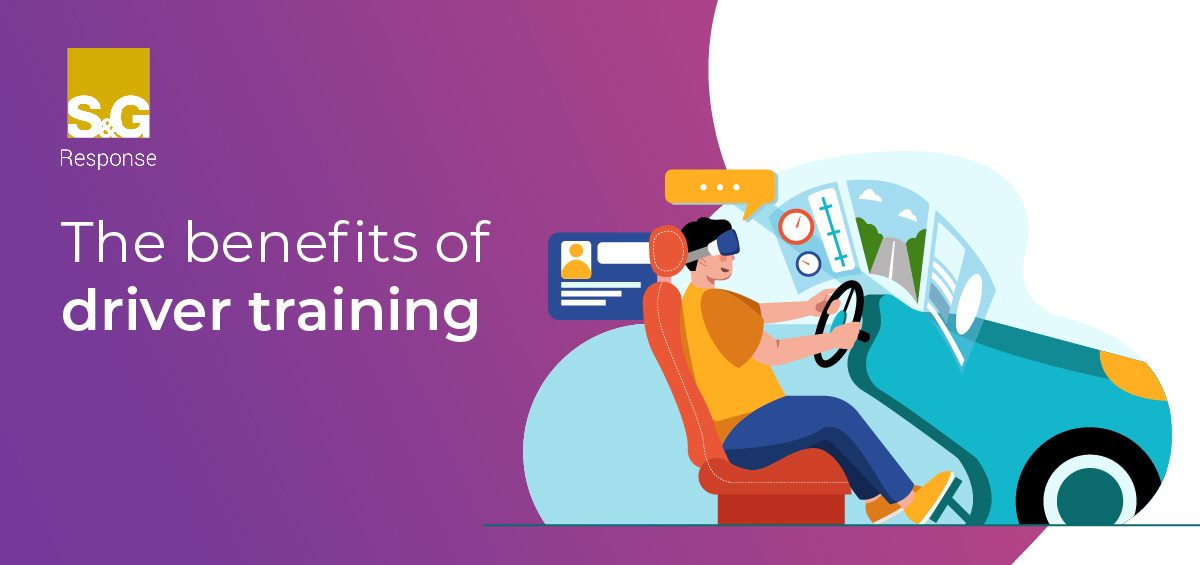Driver training is essential when it comes to developing a consistent road safety culture across a business, but the most important steps to creating a successful driver training programme are to ensure that training is both relevant and focused, to measure driver behaviour as a key indicator for safety, and to sustain the programme through feedback and learning.
For commercial fleets of any size, it’s important to take great care and time in developing a driver training programme, as they can help to protect not just its physical drivers, but also the safety of other road users too.
Driver training programmes shouldn’t just be for new recruits, either; they need to facilitate the professional development of drivers at different stages of their career, enabling them to continually sharpen their skills and adapt to new road laws and changes.
What’s more, by preventing accidents through enhanced driver safety, comprehensive and ongoing driver training schemes can also reduce fleets’ risk of being subject to litigation, as well as even go as far as helping to reduce staff turnover, and the costs associated with it.
How do you know which drivers need to improve?
Telematics systems, sometimes called black boxes, are now fairly standard in the fleet industry, and they provide fleet managers with finely detailed insights into the performance of individual drivers.
This is because they collect data across a wide range of different areas relating to drivers’ conduct behind the wheel, which can then be used to develop a detailed picture of how they each behave. This data can then enable fleet managers to highlight any shortcomings and build out individually tailored training programmes to address them.
What signals might mean my drivers need training?
Using telematics data can provide a core foundation to any driver training programmes. Crucially, it can enable fleet managers to develop more accurate risk profiles of each driver and monitor improvements over time, allowing them to spot trends or patterns which might indicate that a driver behaves a certain way, for a certain reason.
This data can then alert fleet managers to a range of undesirable and even dangerous behaviours, such as including harsh braking, excessive speeding, tailgating and rough cornering. In terms of data mapping, this makes it relatively simple to identify the key areas of concern that might need to be addressed, however, telematics data on its own cannot necessarily determine the root causes of these patterns, it purely shows that those problems are there.
How can I build a driver training programme?
Once fleet managers have identified their driver training needs, they can decide the most appropriate training methods for each driver.
Here, driver profiles can provide crucial insights into what training might benefit individual drivers, whilst telematics data can be applied to add more context such as risk and typical driver behaviours.
But it’s also important to remember that all drivers are not the same. Some may enjoy the time they spend alone in their cabs, whereas others may thrive in an environment with other people around them. Likewise, some may be having a difficult time at home which is impacting their mental health, therefore reflecting in their unusual driving pattern. This is why character assessments are also important, as they will help to determine what the person is like, not just how they drive.
By combining all of these insights together, fleet managers can then decide if individual drivers might benefit more from one-to-one discussions, group training sessions, online workshops or even personalised driver coaching.
Why is ongoing driver training important?
As easy as a driving career might seem at first, it actually involves continuously adapting to change, such as the introduction of new technologies like electric vehicles (EVs), highway code updates and physical road infrastructure changes too. As a result, it’s important that fleet managers keep their drivers properly up to speed.
Ongoing opportunities for training and development are also important from a job satisfaction perspective, as just because drivers spend most of their days lone working in their cabs, doesn’t mean they should be neglected.
Drivers still need to have training opportunities so that they can continually improve themselves and stay fully engaged with their work, and fleets also need to ensure that the training they provide is engaging for drivers at different stages of their careers.
Some drivers may have been in the job for 30+ years, whereas others may just be starting out. Either way, their training and development will always be essential as the industry continues to move forward.
How can driver training help reduce costs and increase retention?
It’s no secret that the fleet industry has been facing a driver shortage across the globe recently, with warnings that this situation could worsen even more in the aftermath of Brexit. Retaining drivers and reducing staff turnover are therefore essential, and driver training programmes can play a big part in helping.
This is because not only is high staff turnover an inconvenience for fleets, but it also comes with major costs attached too. There’s the cost of recruiting and training up new drivers, as well as the lost productivity which tends to go hand-in-hand with high turnover. After all, fully integrating new recruits into the driver workforce takes time, and the more time spent training new recruits, mean the less drivers out there on the road.
But, an engaging programme of continual driver training gives drivers another reason to stay with their employer, and therefore can help at keeping staff turnover and any waisted funds to a minimum.
All fleets are unique, and so are its drivers.
Contact our S&G team today to find out how we can help support your business.










